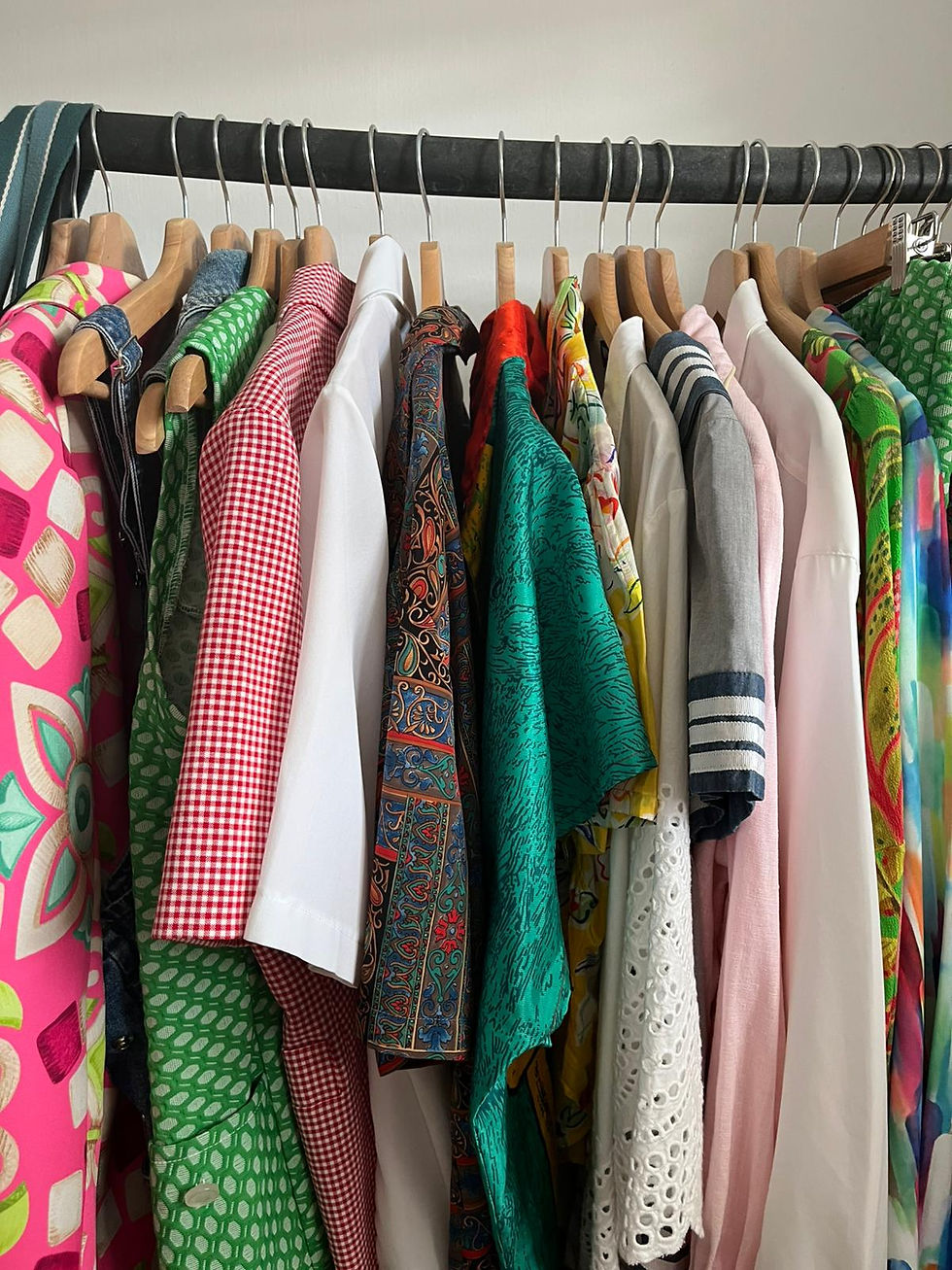
Thrifting : The long way to find clothing
- tamaralevy8
- Jan 30, 2024
- 3 min read
Thrifting, buying second-hand or vintage pieces as new pieces of clothing.
Can the old turn into new? Is it even sustainable?
Thrifting reflects a desire to consume less and differently and is a sustainable form of shopping. Buying second-hand items reduces the demand for new products, which decreases the amount of clothing produced and resources needed for production. Less demand ultimately leads to less production. Consumers are the driving force behind the fast-fashion industry, as long as clients buy, fast-fashion brands make new clothing, non-stop.
Thrifting, however, doesn't always appear as a shopping option, often due to its aleatory nature. Finding thrift pieces of clothing can be a challenging experience, especially if we are used to the traditional way of consuming fashion.

Are we formatted to fit the consumerism standards of our society, to the point where it defines our shopping experience?
Let's visualize our shopping experience, in any traditional store, upon entering, or while shopping online, we can choose from a reproduction of runaways at a fraction of the price, in every possible size. Shopping-fast fashion is a convenience, to feed our constant need for newness and need to belong. However, thrifting is growing in popularity and second-hand is slowly becoming trendy. The business of thrifting is expected to reach $77 billion in 2025, its revenues have more than doubled in the last four years.
Business and sustainability can work together very efficiently regarding thrifting. The goal is to change the way we consume, by buying clothes and goods that were already produced and used, and lengthen the product's life. The price of second-hand clothing tends to go down tremendously compared to its first-hand option, which translates into affordability for consumers, but also a story to tell and a higher emotional attachment to the clothes.
The reason behind the rise of the business of thrifting comes from both the realization that production and pollution have to decrease but also, mostly, the financial reality of shopping.
With thrifting, our shopping experience also switches drastically, instead of being fed fashion trends, and runaway copies, we have to search, hunt, for our next find. It injects back involvement in the process of buying clothes. That being said, even in the case of thrifting, the need for goods is still influenced by our identity search, and self-presentation, influenced by materialistic values. However, in terms of pricing, thrifting can then be presented as the alternative option to ultra-fast fashion brands, such as Shein or H&M.
The issue of buying ultra fast-fashion second-hand can also be asked, how much more sustainable is it?
It also poses the question of the quality of clothing found in thrift stores, what would anyone gain by buying fast-fashion brands in a store made for quality clothes to last?
The first layer is a simple equation, if clothes are found in a second-hand store, it does mean their lifespan is being lengthened. However, on a deeper level, on an ideal one almost, it's disappointing as the delight and gratification of shopping second-hand is to find more vintage and unique pieces.
Yet, this reality is not a surprise as more shoppers buy from fast-fashion brands, and the items they tend to give away come from such sources.
On the side of the giver, another issue linked to thrifting is the risk of clothes ending up in landfills, as only 16% of donated clothing actually make their way to the racks of second-hand stores, the rest will most likely end up in landfills.
The circularity of the thrifting business is yet to be upgraded to adapt to the current fast-fashion phenomenon but it still provides a better alternative.



Comments